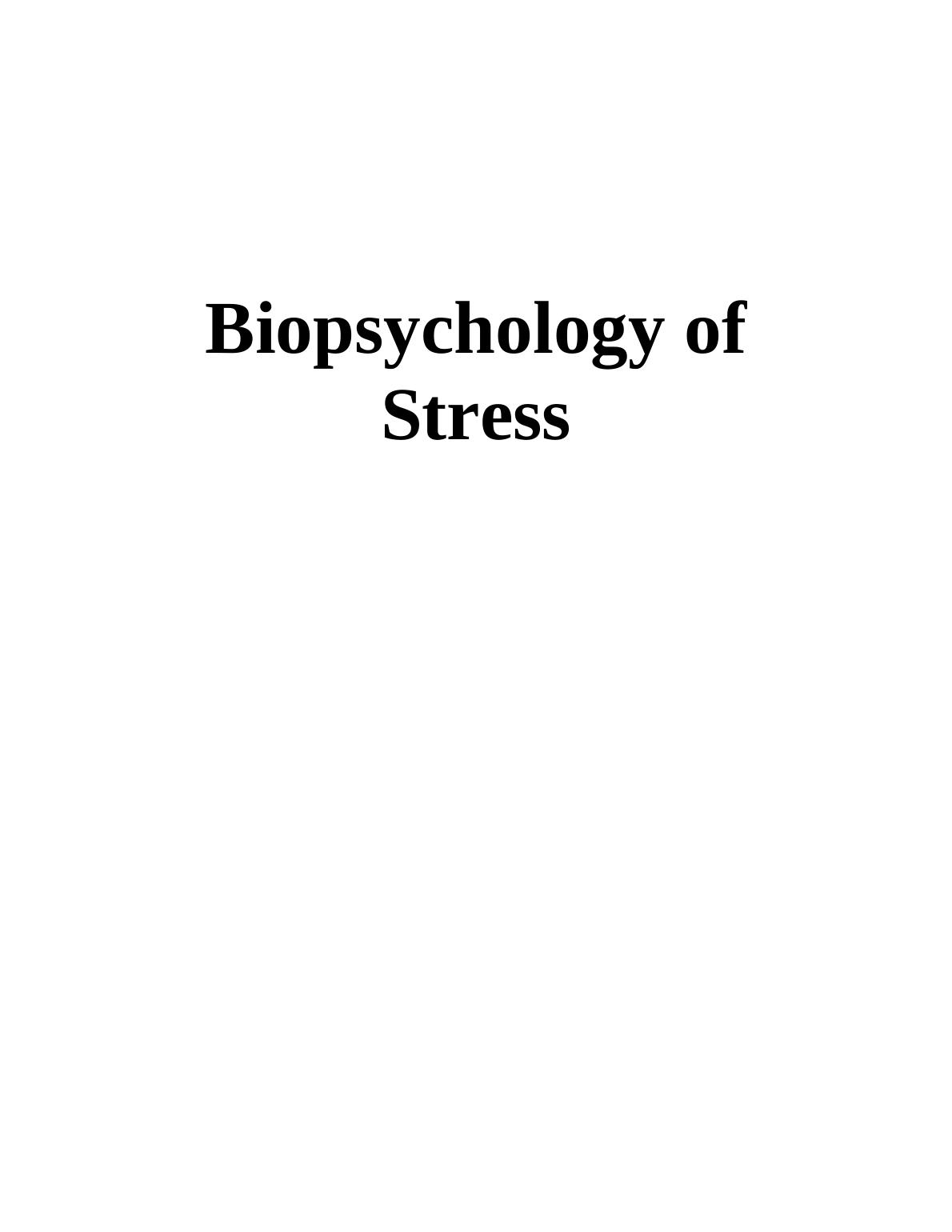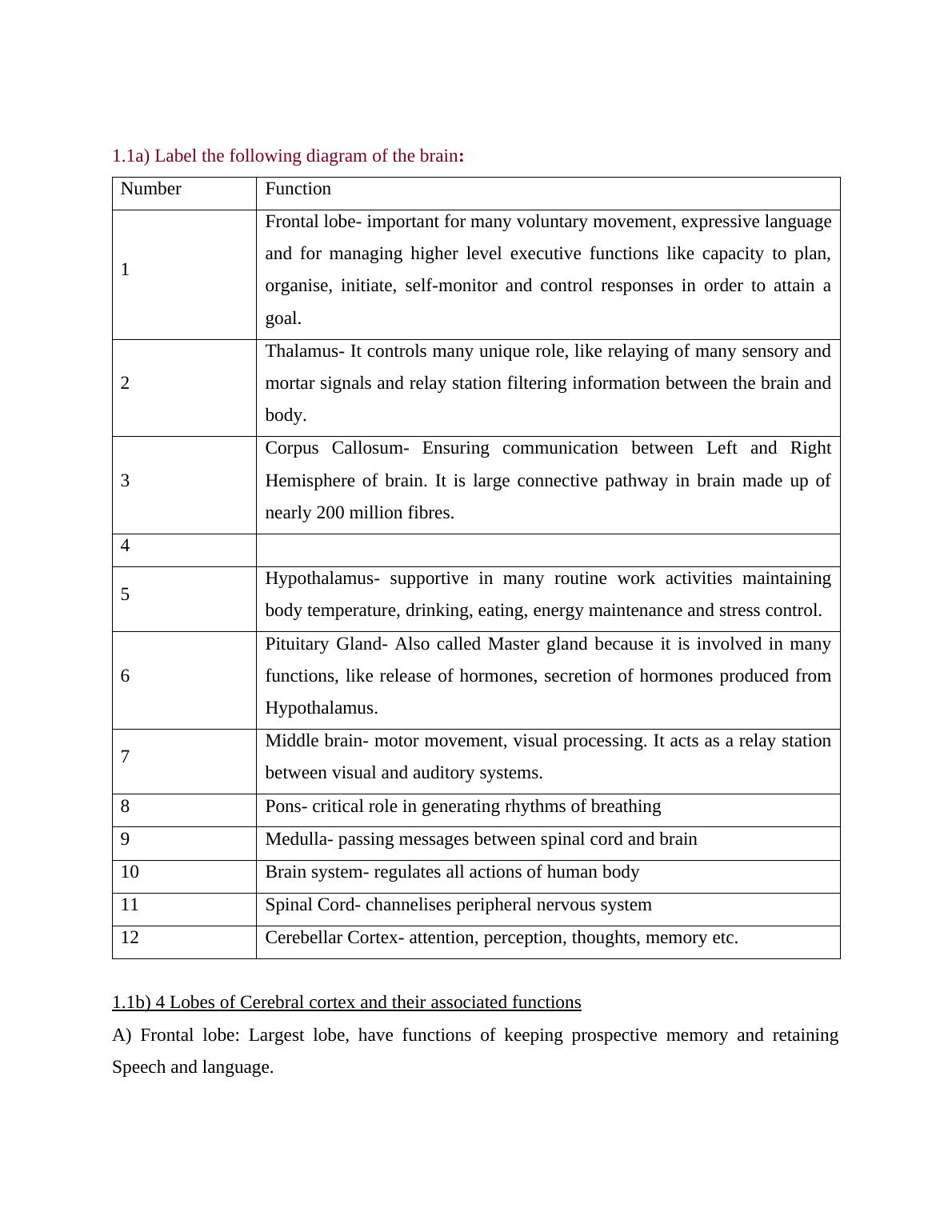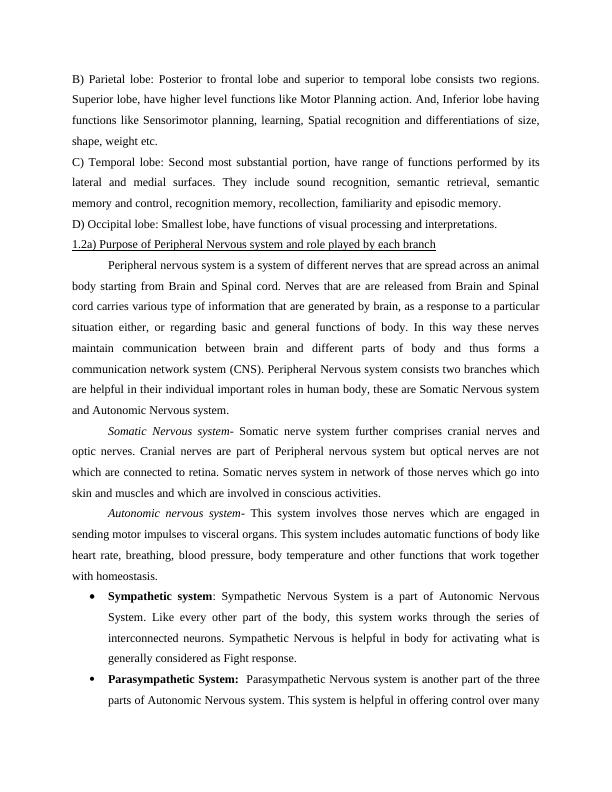Biopsychology of Stress
11 Pages2534 Words1 Views
Added on 2022-12-26
About This Document
This document discusses the biopsychology of stress, including the role of neurotransmitters, the hypothalamus, and the pituitary gland in stress response. It also explores the effects of chronic stress on the body and behavior. Additionally, it evaluates various treatments and therapies for stress.
Biopsychology of Stress
Added on 2022-12-26
ShareRelated Documents
End of preview
Want to access all the pages? Upload your documents or become a member.
Nervous System: Structure, Function, and Disorders
|9
|2141
|409
Nervous System: Structure, Function, and Disorders
|8
|1754
|177
Neurological Basis of Alzheimer's Disease - BIO363
|12
|2933
|154
The most critical system of the body
|10
|2702
|13
The Living Body: Components of a Reflex Arc, Endocrine Glands, Nervous and Endocrine System Coordination, Male and Female Reproductive System
|10
|1680
|312
Psychology Assignment: Human Brain
|10
|3834
|121




